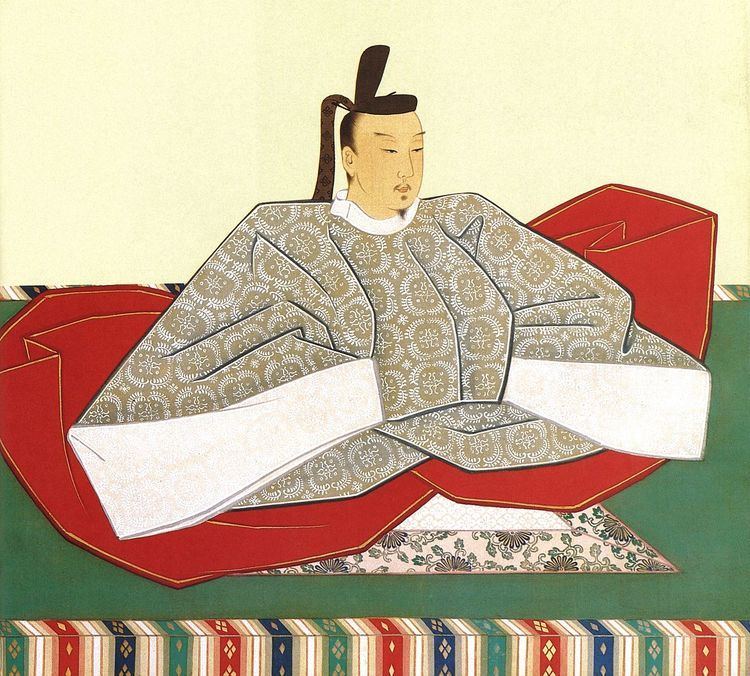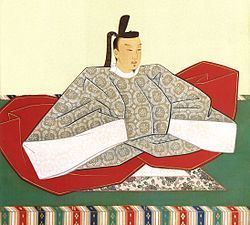Successor Shoko Name Emperor Go-Komatsu Grandparents Emperor Go-Kogon Mother Sanjo Itsuko Children Ikkyu, Emperor Shoko | Father Go-En'yu Parents Emperor Go-En'yu Spouse Hinonishi Sukeko Role Sovereign Great-grandparents Emperor Kogon | |
 | ||
Predecessor Go-En'yu (Nanboku-cho)Go-Kameyama Born 1 August 1377 ( 1377-08-01 ) Died December 1, 1433, Kyoto, Kyoto Prefecture, Japan Similar People Ikkyu, Emperor Go‑Kameyama, Empress Go‑Sakuramachi, Emperor Reigen | ||
Emperor Go-Komatsu (後小松天皇 Go-Komatsu-tennō) (August 1, 1377 – December 1, 1433) was the 100th emperor of Japan, according to the traditional order of succession. He is officially considered to have been the Emperor of Northern Court from May 24, 1382 to October 21, 1392, when Emperor Go-Kameyama abdicated. He is understood to have been a legitimate emperor (the 100th sovereign) from that date until October 5, 1412. According to pre-Meiji scholars, his reign spanned the years from 1392 through 1412.
Contents

This Nanboku-chō "sovereign" was named after the 9th-century Emperor Kōkō, and go- (後), translates literally as "later." Jien's Gukanshō explains that Kōkō was called "the Emperor of Komatsu". The 14th-century pretender and emperor may be called the "later Emperor Kōkō" or the "later Emperor Komatsu". The Japanese word go has also been translated to mean the "second one;" and in some older sources, this would-be emperor may be identified as "Komatsu, the second", or as "Komatsu II."
Genealogy
Before his ascension to the Chrysanthemum Throne, his personal name (his imina) was Motohito-shinnō (幹仁親王).
Go-Komatsu was the first son of Emperor Go-En'yū. His mother was Tsūyōmonin no Itsuko (通陽門院厳子), daughter of the Lord Keeper of the Privy Seal Sanjō Kimitada (三条公忠).
He was named after Emperor Kōkō, who had the alternate name Komatsu, because they both returned the throne to their families, in the case of Emperor Go-Komatsu, by defeating his Southern Court rivals, and in the case of Emperor Kōkō, by succeeding his elder brother's grandson, Emperor Yōzei.
Events of Go-Komatsu's life
In his own lifetime, Go-Komatsu and those around him believed that he occupied the Chrysanthemum Throne from May 24, 1382 through 1412.
He was raised in the turbulent Nanboku-chō period of rival northern and southern courts in the mansion of Hino Sukenori (日野西資教). He succeeded as Northern Emperor upon the abdication of his father, the Northern Pretender Emperor Go-En'yū. With the help of Ashikaga Yoshimitsu, his father ruled as Cloistered Emperor. In 1392, following the post-Nanboku-chō unification of the two formerly contending courts, the Southern Emperor Emperor Go-Kameyama turned over the three sacred treasures, which officially signaled the end of the southern court's claims to sovereignty. Thus, Emperor Go-Komatsu became the acknowledged, undisputed and legitimate emperor of Japan on October 21, 1392.
In the peace at that time, it was agreed that the northern and southern courts would alternate. However, in 1412, when Emperor Go-Komatsu abdicated, the agreement was thrown away, and, instead, he was succeeded by his son, Emperor Shōkō, and all subsequent Emperors were descended from the Northern Court. Until 1911, the Northern Court Emperors were considered the legitimate ones, and the Southern Court to be illegitimate. However, now the Southern Court is considered to have been legitimate, primarily because they retained the three sacred treasures, and thus, Emperor Go-Komatsu is not considered to have been legitimate for the first 10 years of his reign.
He is enshrined with other emperors at the imperial tomb called Fukakusa no kita no misasagi (深草北陵) in Fushimi-ku, Kyoto.
Kugyō
Kugyō (公卿) is a collective term for the very few most powerful men attached to the court of the Emperor of Japan in pre-Meiji eras. Even during those years in which the court's actual influence outside the palace walls was minimal, the hierarchic organization persisted.
In general, this elite group included only three to four men at a time. These were hereditary courtiers whose experience and background would have brought them to the pinnacle of a life's career. During Go-Komatsu's reign, this apex of the Daijō-kan included:
Eras of Go-Komatsu's reign
The years of Go-Komatsu's Nanboku-chō and post-Nanboku-chō reign are more specifically identified by more than one era name or nengō.
Nanboku-chō northern court